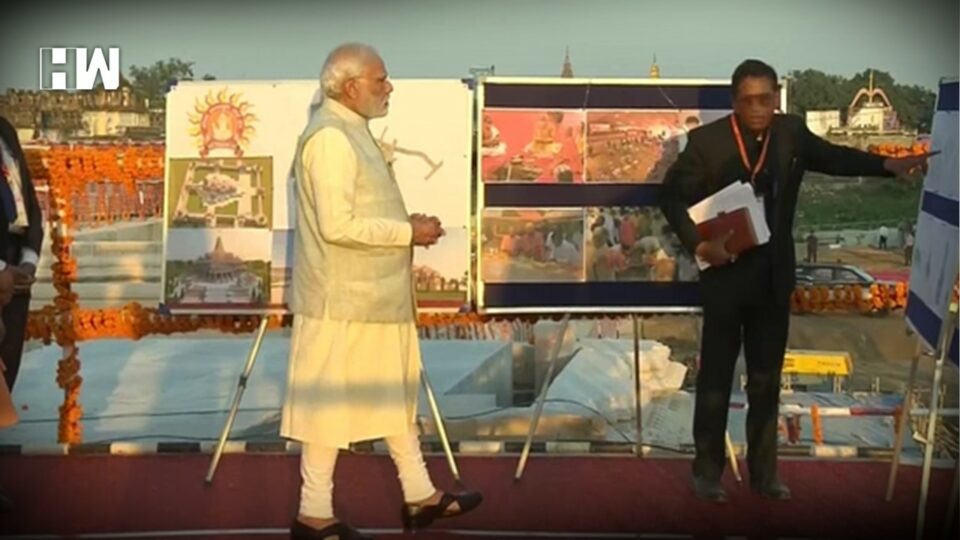Prime Minister Narendra Modi who is on a visit to Ayodhya, inspected the Shree Ram Janmabhoomi Teerth Kshetra site here on Sunday.
Earlier PM Modi offered prayers to Lord Ramlala Virajman in Shri Ram Janmabhoomi on the eve of Diwali.
Prime Minister arrived in Ayodhya for taking part in the Deepotsav celebrations today. He was welcomed by Uttar Pradesh Chief Minister Yogi Adityanath and Governor Anandiben Patel.
The ‘janmbhoomi’ of Lord Rama is all set to witness the grand ‘Deepotsav’ celebrations in the presence of PM Modi on the eve of Diwali.
The Deepotsav, which is setting a new benchmark of records, will see Ayodhya adorned with countless indigenous and exotic flowers.
Every intersection of Ayodhya is embellished with rangolis made of flowers to make the Deepotsav 2022 more magnificent. The bank of river Saryu has been beautifully decorated with earthen lamps set in a pattern that awaits their lighting as soon as the Sun sets.
Security in Ayodhya has beefed up in view of the Prime Minister’s visit.
The Yogi Adityanath government through the organisation of ‘Deepotsav’ will promote not only the state’s spiritual and religious significance but also the ‘Dhobia’, and ‘Faruwahi’ dance artists.
“The artistes of ‘Braj’ in Awadh will mesmerise the audience with the culture, language and unique characteristics of the land of Rama-Krishna,” an official statement read.
The banks of river Sarayu await to be lit up with lakhs of earthen lamps on the occasion of ‘Deepotsav’.
This year, out of 16 chariots 11 chariots are being prepared by the Information Department and 5 will be digital, which will be taken out on open trucks by the Department of Tourism. It will be based on scenes from the Ramayana era, in which the model of Ram temple and the model of development of 2047 Ayodhya will be presented.
According to Ram Mandir construction committee, the construction work of the Temple is progressing according to the plan and by December 2023 devotees will have the opportunity of offering prayers before Lord Shri Ram.
The superstructure is being constructed on the 6.5m (21 ft) high plinth with Granite stone which was completed in September this year.
Approximately 17,000 Granite stone blocks weighing two tons each were used in the construction of the plinth by interlocking arrangement between the stones. No steel was used in foundation, raft and plinth. The total built-up area is 58,920 sqft and Ground Floor reached after completing 72 ft of three-layered structures. The superstructure of the temple is being constructed by using carved Rajasthan sandstone from Bansi Paharpur district Bharatpur.
Approximately 4.75 lakh cubic feet of Bansi Paharpur stone shall be used in the superstructure of the Shri Ram Temple. The walls and floor in Garbh Griha of the Temple will be of Makrana Marble. There will be 392 Pillars in the temple, 166 columns on the ground floor, 144 columns on the first floor, and 82 columns on the second floor.
Heavy rain in the first week of October had stalled the construction work of the temple. However, it has now picked pace.
(Except for the headline, this story has not been edited by HW News staff and is published from a syndicated feed.)
As an independent media platform, we do not take advertisements from governments and corporate houses. It is you, our readers, who have supported us on our journey to do honest and unbiased journalism. Please contribute, so that we can continue to do the same in future.

